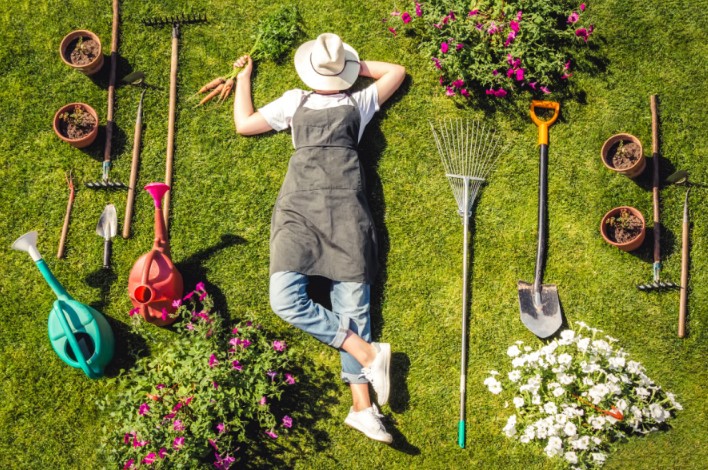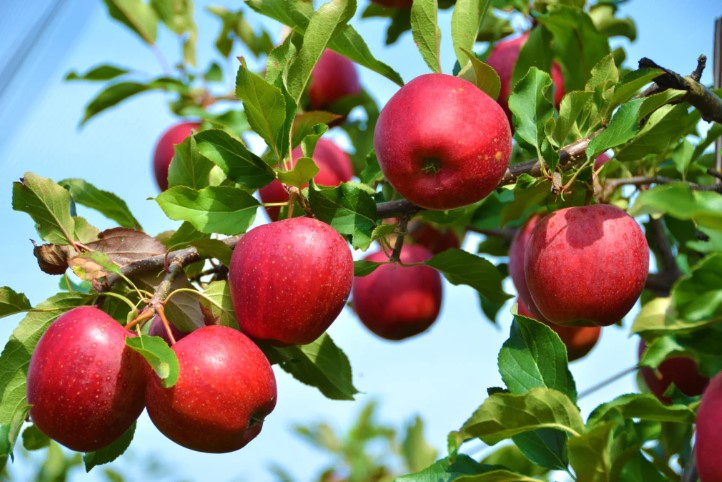
Gardening is a rewarding activity that offers numerous benefits, from the satisfaction of growing your own food to the beauty of a well-tended garden. To achieve the best results, it’s crucial to have the right gardening tools. This guide will walk you through the most essential gardening tools, their uses, and tips for maintaining them to ensure a flourishing garden.
1. Hand Tools: The Foundation of Gardening
1.1. Trowel
A trowel is indispensable for any gardener. It’s perfect for digging small holes for planting, transplanting seedlings, and even removing weeds. When choosing a trowel, look for one with a comfortable handle and a sturdy, rust-resistant blade.
1.2. Hand Fork
A hand fork is ideal for loosening soil, especially in confined spaces. It’s also useful for breaking up clumps of soil and removing small weeds. A robust, well-made hand fork can make soil preparation much easier.
1.3. Pruners (Secateurs)
Pruners are essential for maintaining plant health. They allow you to trim and shape plants, remove dead or diseased branches, and promote healthy growth. Opt for bypass pruners for most tasks, as they make cleaner cuts compared to anvil pruners.
1.4. Weeder
A weeder helps in removing weeds with deep roots without disturbing surrounding plants. Look for weeders with ergonomic handles and durable materials to make weeding less strenuous.
2. Digging Tools: Preparing the Ground
2.1. Spade
A spade is essential for digging and moving soil, compost, or mulch. Its flat blade is perfect for edging beds and digging straight-sided holes. A spade with a long handle provides better leverage, reducing the effort required.
2.2. Shovel
A shovel is similar to a spade but typically has a curved blade. It’s excellent for moving loose materials like soil, gravel, or compost. Choose a shovel with a comfortable grip and a strong, lightweight blade for ease of use.
2.3. Garden Fork
A garden fork is perfect for turning and aerating soil, lifting plants, and digging out root crops. Its tines penetrate the soil better than a spade, making it easier to break up compacted ground.
3. Watering Tools: Keeping Your Garden Hydrated
3.1. Watering Can
A watering can is indispensable for watering plants, especially in areas without easy access to a hose. Choose one with a detachable rose (sprinkler head) to provide a gentle shower or a direct stream of water as needed.
3.2. Garden Hose
A garden hose is essential for larger gardens. Look for hoses that are kink-resistant and come with adjustable nozzles to control water flow. Investing in a hose reel can help keep your hose organized and extend its lifespan.
3.3. Soaker Hose
A soaker hose provides slow, even watering directly to the soil, minimizing water wastage. It’s ideal for watering rows of plants or garden beds, ensuring that the roots receive adequate moisture.
4. Cutting Tools: Precision in Pruning
4.1. Loppers
Loppers are similar to pruners but with long handles, making them ideal for cutting thicker branches that pruners can’t handle. They provide greater leverage, allowing you to cut branches up to two inches in diameter with ease.
4.2. Hedge Shears
Hedge shears are used for trimming and shaping hedges and shrubs. They have long blades that make it easy to cut large areas evenly. Look for shears with sharp, durable blades and comfortable handles.
4.3. Pruning Saw
A pruning saw is necessary for cutting branches that are too thick for pruners or loppers. Its sharp teeth are designed to cut through wood cleanly and efficiently. Choose a pruning saw with a comfortable grip and a folding blade for safety and convenience.
5. Cultivating Tools: Enhancing Soil Health
5.1. Hoe
A hoe is essential for cultivating soil and controlling weeds. It comes in various types, such as the draw hoe, which is perfect for creating furrows and breaking up soil, and the scuffle hoe, which is excellent for slicing through weed roots just below the soil surface.
5.2. Rake
A rake is indispensable for leveling soil, removing debris, and spreading mulch. Garden rakes, with their sturdy tines, are perfect for breaking up and smoothing out soil, while leaf rakes are ideal for gathering leaves and lightweight debris.
5.3. Cultivator
A cultivator is used to loosen soil and remove weeds between rows of plants. It can be either a hand tool or a larger, powered tool. A hand cultivator is ideal for small gardens and precise work, while a powered cultivator can save time and effort in larger areas.
6. Planting Tools: Ensuring Successful Growth
6.1. Dibber
A dibber is a pointed tool used to make holes for planting seeds, bulbs, or seedlings. It ensures that you create consistent planting depths, which is crucial for the uniform growth of your plants.
6.2. Bulb Planter
A bulb planter makes planting bulbs quick and easy. It removes a core of soil, allowing you to place the bulb at the correct depth. Some bulb planters have measurement markings to ensure precise planting.
6.3. Seedling Tray
A seedling tray helps you start seeds indoors or in a greenhouse. It provides a controlled environment for germination and early growth, increasing the chances of successful transplanting.
7. Protective Gear: Safety in the Garden
7.1. Gloves
Gardening gloves protect your hands from thorns, sharp objects, and soil. Choose gloves that are durable, fit well, and are appropriate for the tasks at hand. For example, heavy-duty gloves are ideal for handling rough materials, while lightweight gloves are perfect for delicate tasks.
7.2. Knee Pads
Knee pads provide comfort and protection when kneeling for extended periods. They help prevent knee pain and injury, making gardening more enjoyable. Look for knee pads with adjustable straps and sufficient padding.
7.3. Sun Protection
Gardening often involves long hours in the sun, so it’s essential to protect yourself from harmful UV rays. Wear a wide-brimmed hat, sunglasses, and apply sunscreen to exposed skin. Lightweight, long-sleeved shirts and pants can also provide protection without causing overheating.
8. Maintenance Tools: Keeping Your Tools in Top Shape
8.1. Sharpening Stone
A sharpening stone is crucial for maintaining the sharpness of your cutting tools. Sharp tools make cleaner cuts and are easier to use. Regularly sharpen pruners, loppers, and shears to keep them in optimal condition.
8.2. Tool Oil
Tool oil prevents rust and keeps moving parts lubricated. After each use, clean your tools and apply a thin layer of oil to metal parts. This simple maintenance routine can significantly extend the lifespan of your tools.
8.3. Tool Storage
Proper tool storage protects your tools from the elements and reduces the risk of damage. Store tools in a dry, sheltered area, and consider using a tool rack or shed to keep them organized and accessible.
By equipping yourself with these essential gardening tools, you can ensure that your garden thrives. Each tool has a specific purpose, and having the right tools makes gardening tasks more efficient and enjoyable. Remember to maintain your tools regularly to extend their lifespan and keep them in top working condition.
